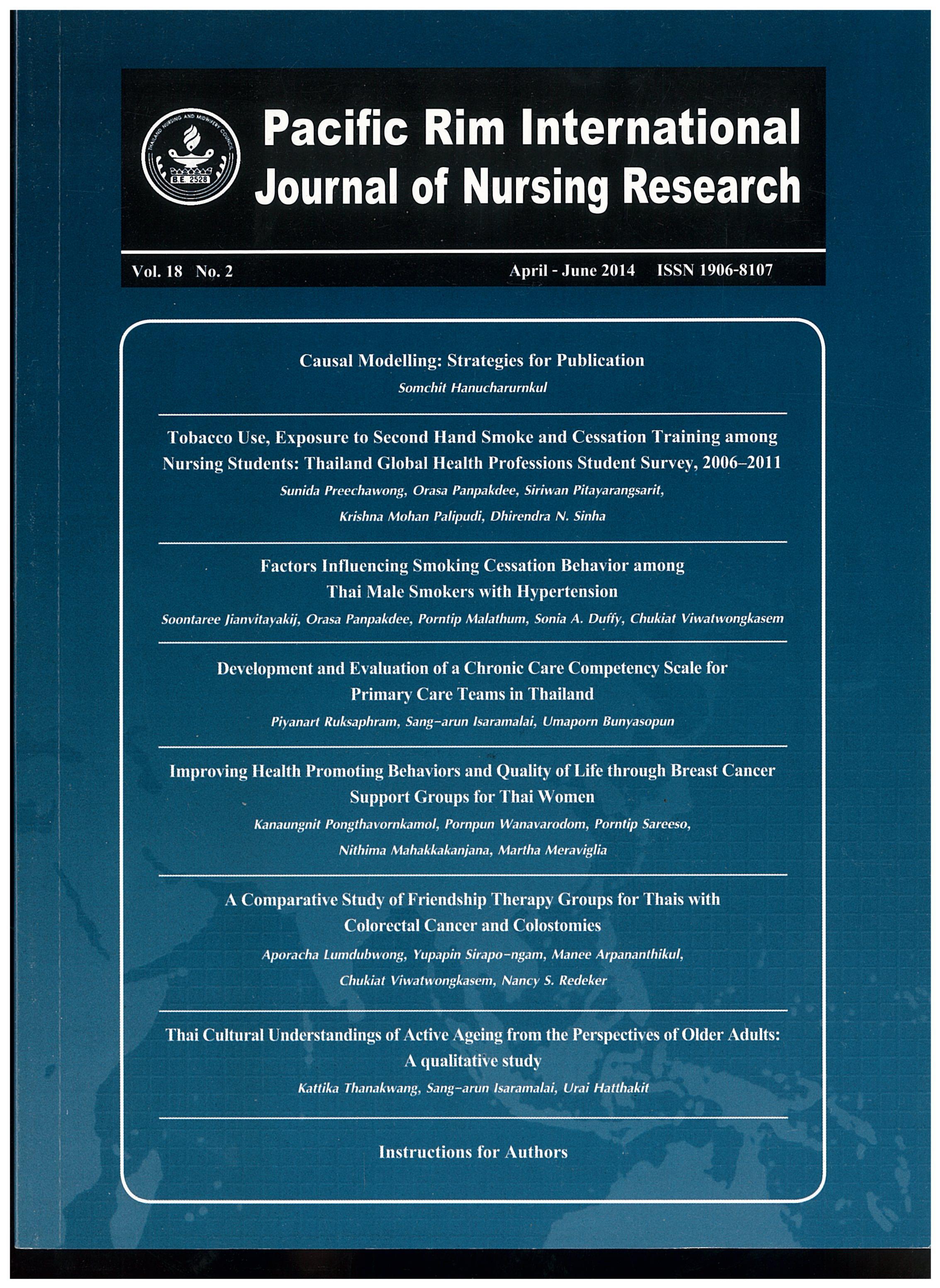Tobacco use, exposure to secondhand smoke and cessation training among nursing students: Thailand Global Health Professions Student Survey, 2006–2011
Keywords:
Smoking cessation training, health professionals, nursing students, tobacco use.Abstract
The purpose of this study was todescribe the smoking status of nursing students, their exposure tosecondhand smoke, and training on tobacco cessationadvisement, as well as comparison with the Global Health Professions StudentSurvey in 2006 in Thailand. Theschool-based survey was carried out between September and October 2011,involving 1,845 third-year nursing students in Thailand. The results indicated that prevalence oftobacco use among nursing students was quite low (1.9% in 2006 and 1.7% in2011) and did not change during 2006-2011. Reduction of prevalence of cigarette smoking (1.1% in 2006 to 0.5% in2011) was noted between 2006 and 2011. However, the prevalence of other typesof tobacco products increased from 1% in 2006 to 1.9% in 2011. The prevalence of exposure to secondhandsmoke at home did not change between 2006 and 2011; however, improvement insecondhand smoke exposure in public places was observed (59.4% in 2006 to 50.7%in 2011). There was a significantincrease in the proportion of nursing students that reported they receivedformal training in smoking cessation approaches in their school training (from12% in 2006 to 29.7% in 2011). However,there was no significant increase in the percentage of nursing students who reportedhaving learned that it is important to educate patients who want to quit. This warrants efforts to be continued andfurther strengthened by integrating smoking cessation training in nursingcurricula.
Downloads
Published
How to Cite
Issue
Section
License
Copyright: The Pacific Rim International Journal of Nursing Research, Thailand Nursing & Midwifery Council has exclusive rights to publish, reproduce and distribute the manuscript and all contents therein.








.png)



